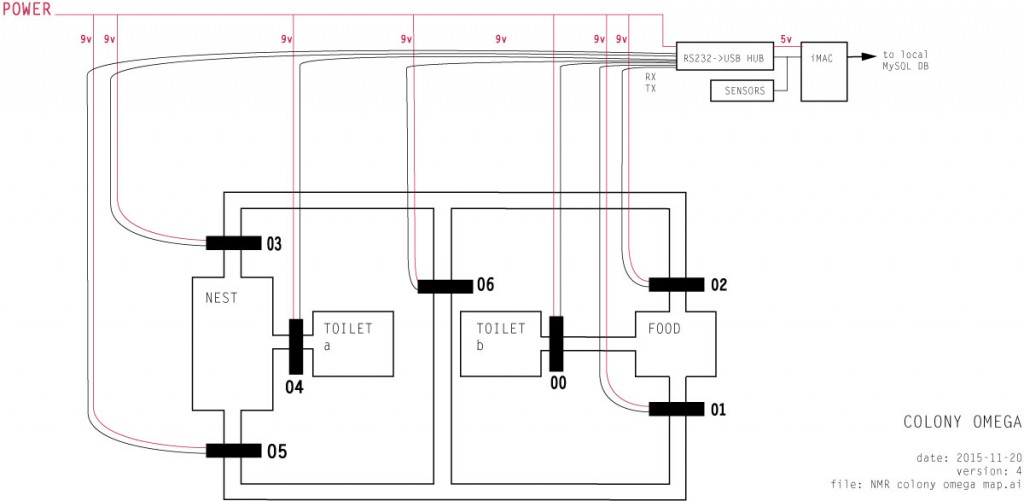NMR data
I’ve been considering what additional data will be needed for the animation/objects. I think some of the basic stuff can be calculated and stored in MySQL, things like:
- distance travelled (per day, stored per nmr; cumulative since beginning of data)
- speed (average per day; current – based on last x mins)
- days alive (current – incremental until death)
All these data points can be used as parameters in the animation.
How can we see communal activity, such as nearest neighbours? We need to divide the nest into 6 zones, and note which zone each animal is in at any one time. The zones might be a better way of visualising the animals rather than the sensor points, as we can have them animating to simple rules within that zone area. Sketch: https://www.flickr.com/gp/141167866@N06/7q8812
From the zones we can see which animals are sharing a zone, and which animals are neighbours (in a touching zone). We can also calculate length of time in a zone which when summed will give us a break down of activity across the nest.
i.e. a day in the life of animal 16 =
zone A 20%
zone B 5%
zone C 40%
zone D 15%
zone E 12%
zone F 8%
We can then see if we can match the pattern of one animal to another based on which zone they are in and when.
